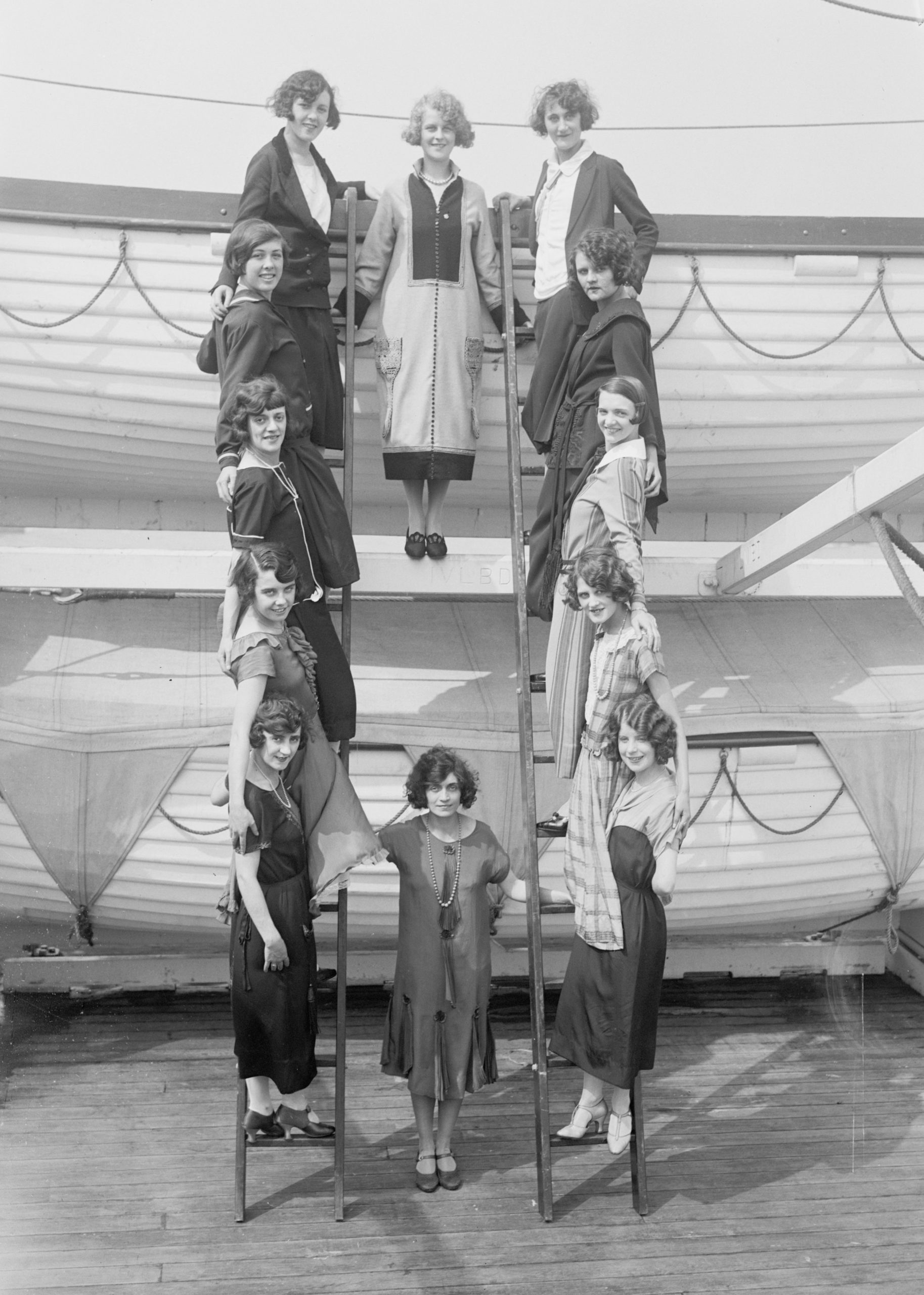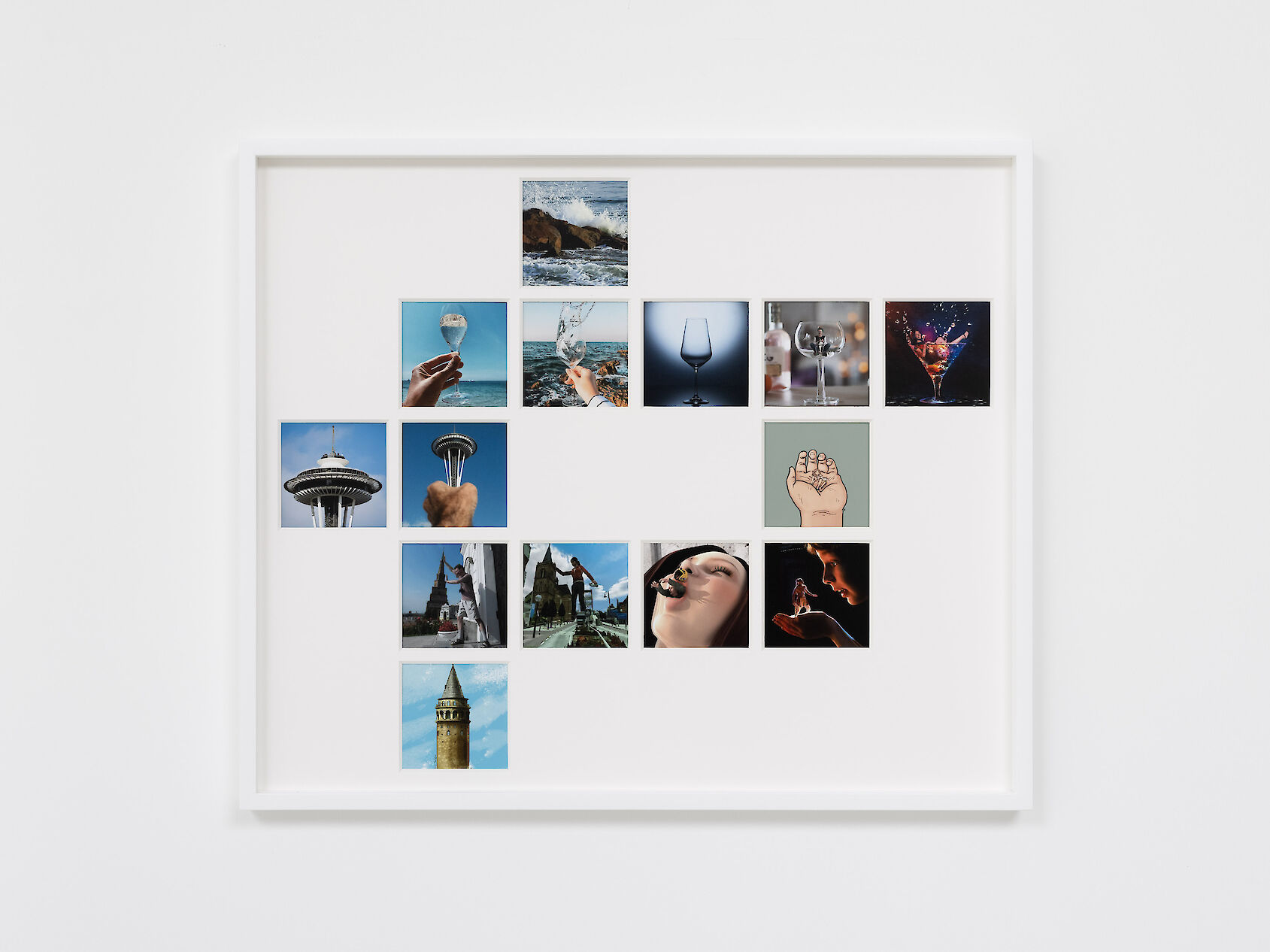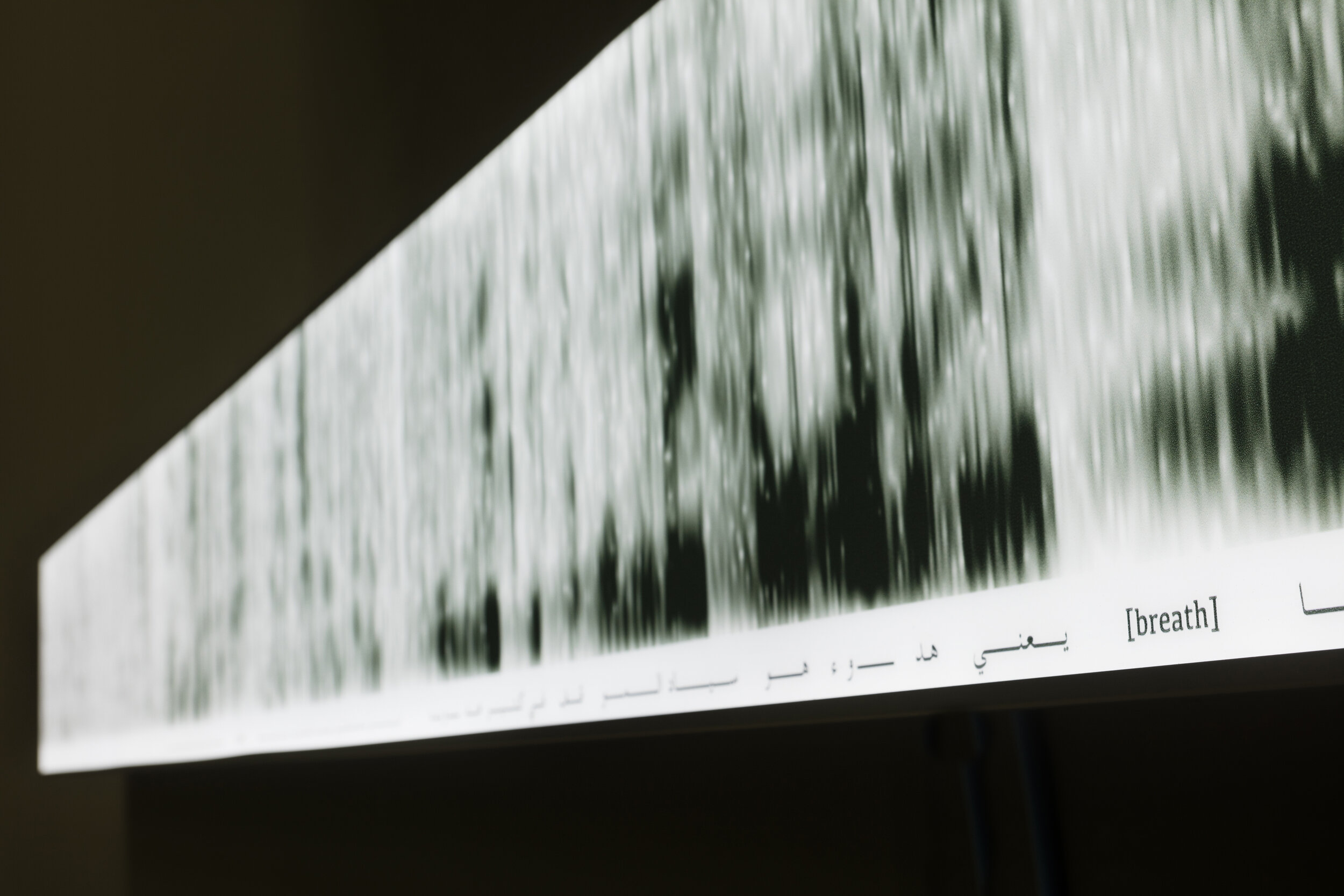OPEN ASSEMBLY
Experiments in Aesthetics and Politics









































Recalling the Experimental Workshop
The Tokyo-based intermedia avant-garde art group 実験工房 Jikken Kōbō (Experimental Workshop) existed officially from 1951 to 1957. In this time, the group worked on and created a number of projects, many of which were theatrical productions that incorporated new technologies across media, including the use of sound recording and auto-slide projector made by the technicians who went on to create Sony.[1] Questioning society, new technology and traditional conceptions of art in a manner both relevant to this day and influenced by past avant-garde groups such as the Russian Constructivists, histories of this important group have been slower to reach an international audience, owing partially to translation and largely to lack of documentation. Once their theatrical performances occurred, little to no media documentation remained. Sometimes a photograph, other times a sound recording. Their film works exist as oral history.
In a 2010 interview, former member Yamaguchi Katsuhiro said of the group, “the name, ‘Experimental Workshop’, which the poet and critic Takiguchi Shuzo chose for us, was always meant to communicate the sense of a ‘virtual’ workshop. I think this is perhaps the most important aspect of what we did”.[2] It is in a sense, as the interviewers Andrew Maerkle and Natsuko Odate suggest, that “technology couldn’t keep up with what [Jikken Kōbō was] doing in the 1950’s, so not only the name but also the documentation of Jikken Kōbō’s activities becomes ‘virtual’”. [3] Virtuality, in this instance, meaning something being almost, or nearly, as described. A being in essence, close to the original, but not quite the same. Such documentation can make research into their practices difficult and potentially hinder a more robust understanding of their activities, or it can call for close attention, as can be seen in the increased interest in Jikken Kōbō despite such lack of technological documentation. The virtual nature, the essence, of the group continues to exist. One reason for this, I would argue, is due to the manner in which the group chose to operate.
In this essay I will thus look at the collective formation of Jikken Kōbō alongside Ana Vujanović and Bojana Cvejić’s concept of the transindividual self in order to retell their story, to show the importance of their ethos for those practicing today, and to begin to think about adequate documentation of non-traditional, in this case, transindividual, formations.
Ana Vujanović and Bojana Cvejić’s book Toward a Transindividual Self: A Study in Social Dramaturgy starts with the following –
If this book opens by repeating that we live in the age of the self and that in 2021 we are not yet past the (twentieth) “century of the self” (to borrow the title of Adam Curtis’ well-known 2002 documentary), it is actually to state something else, the ulterior motive of our inquiry: the crisis of the social since 2000, followed by the massive protests and subsequent self-organized social movements since 2010.[4]
The crisis of the social, one fraught with social unrest, is, for Vujanović and Cvejić, situated from the perspective of a post-1989, neoliberal, capitalist, and democratic Europe.[5] Despite the opportunity for what they call ‘transindividual collective transformations of the society in crisis’, they posit that we live in a moment in which the individual is seen as a unique and original person in the process of self-actualizing. In such an instance, private interest supersedes the common interests of a larger group; proof of the individual as individual is easier to understand and commodify. Due partly to the fall of European communist and socialist regimes after 1989, partly to the global expansion of the free-market economy, and to a loss of a sense of common sense and togetherness in the world (as proposed by Hannah Arendt[6]), Vujanović and Cvejić see a crisis of social imagination, a loss of any long-term perspective towards a common world outside neoliberal capitalism. Such a crisis, as presented in the text, could be remedied by an investment in the concept of transindividuation, and thus “the aim of [their] book is to seize the semantic means of its reconfiguration. In other words, [they] seek to devise concepts and analytical tools for reimagining the social beyond the horizon of reigning individualisms”.[7]
Vujanović and Cvejić work to understand the society we live in and reimagine the social through discourses of the performing arts. By finding “glimpses of transindividuation in lieu of individualism”, they “research how a transindividual formation of the self [as seen in various art practices and arrangements] can bring about different courses of action and a more socially driven imagination”.[8] First, in order to better understand their proposal, it is important to think about the term transindividuation. For the two, transindividuation is an open-ended and unfinished process in which “the individual, the milieu, and the collective are involved alike” [9] in what is a collective (rather than solitary and singular) process of individuation. Here the pre-individual, or language, habits, and social relations come together. This we saw in their public lecture, one that focused heavily on memory, and the ways in which we exteriorize, transmit, and share experience.
Who stores memory, who shares it, and how are they told? In the text, Vujanović and Cvejić end the introduction on the importance of art in its ability, not only to reflect, but to show, produce, and rehearse a social order through an aesthetic ideology.[10] For them, art is the perfect place for new social imaginations to emerge as it can “prefigure, imagine, and symbolize another set of social relations, ones which might be at odds with the hyperindividualist order of the day”[11] but in alignment with the transindividual.
Taking Vujanović and Cvejić’s writing as a prompt, I thus turn to another time and place to participate in the act of sharing the memory of another set of relations. This memory, shared through written and spoken accounts, begins in Tokyo, 1948, when a group of individuals came together to experiment and perform together in society as Jikken Kōbō (Experimental Workshop). What was Jikken Kōbō? Yamaguchi Katsuhiro (1928-2018), a member of the collective wrote in 1996- “even today, it is difficult to define with any precision what Jikken Kōbō was or did”,[12] stating that the 1989 exhibits Japon des avant-gardes 1910-1970 at the Pompidou Center and the 1994 show Japanese Art after 1945: Scream Against the Sky were both unable to portray the entirety of the groups work. Yamaguchi goes on to say, “perhaps Jikken Kōbō should not have been considered in an art historical context”.[13] Here, I look at them as a group showing, producing and rehearsing a different social order.
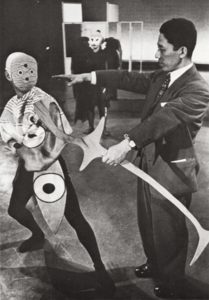
The interdisciplinary group Jikken Kōbō began to meet organically in 1948. There were many collectives and groups forming in the late 40’s and 50’s, starting afresh or picking up on uncompleted projects from before World War II. In an essay by Suzuki Katsuo from 1996 titled “The Dream of the Collective: The Historical Pathos Running through the 1950s”, Suzuki says that practitioners “did not confine themselves to a particular genre, freely traversing the boundaries of existing genres such as literature, art, photography, film, theatre and music”.[14] Suzuki goes on to state that they did this to inspire each other, seek an awareness of issues, identify difference in opinion and because they “shared the notion that collective power that went beyond the individual was necessary to reshape a changing society”.[15] With this in mind, Jikken Kōbō was made up of painters, a printmaker, musical composers, poets, critics, a photographer, a lighting designer, a pianist, and an engineer.
Making work internal to the group that often culminated in theatrical intermedial performances, Jikken Kōbō also worked on projects commissioned by other artists or producers, separating into teams as needed, and were one of the first collectives working in what became known as the realm of intermedia, the creative mixing up of genre and material.[16] With no official workshop, the group worked closely with poet and critic Takiguchi Shūzō who pushed the members to remain fluid and untethered by conventional business structures. One of the many collectives that emerged in Japan after World War II, the “distinctive manner of the group’s operation positions it in an indefinable place in art history”, and unlike a company, the group never incorporated to profit from their work.[17]
When Jikken Kōbō chose not to be an incorporated factor of art, it was a crucial decision to knowingly take the difficult path of remaining in the avant-garde, and as such, to be an essentially anticapitalist collective. In doing so, the group focused on the idea of unifying art and technology, advocated earlier by the Bauhaus as a social contribution. But in contrast to the high art aesthetic of the Bauhaus as a representative adversary, its attention was directed toward its eclectic method of artistic production, that is, a cross-disciplinary examination of new materials and theatrical presentation, which served as a format that allowed the artists to construct, however temporarily, a sense of community among the audiences through the sharing of a specific time and space. In essence, Jikken Kōbō’s central focus was not on a negation of the previous modernism, artistic, or historical, but instead on warning against overt consumerism, materialism, and ‘techno nationalism’, as the base of an illusory sense of community”.[18]
At the time of their activities, Japan was rushing to rebuild itself as an economically successful, democratic nation. Japan’s postwar industrialization brought back an already existing desire for an American-style consumer society, seen in the compulsive consumption of new technologies for the home. Similar to wartime imperial ideology and the nationalist propaganda that circulated around the country, postwar life pushed a consumer economy to satisfy people’s needs and “contribute to the growth of the national fortune”.[19] Jikken Kōbō, concerned by the countries rising materialism, consumerism, and subsequent illusion of community, investigated such worry. The group played a vital role in their examinations, constantly identifying new trends, experimenting with new technology, and trying “to convey new sensations” that may arise as a result.[20] They were truly experimental. According to member Yamaguchi, “experiments, in [Takiguchi’s] understanding, should not be confined to laboratories, but instead, he emphasizes, should come into contact with reality and society”, in this case, with each other and with their audience.[21] He believed that new art required an experimentation period, and that “skipping that stage, to reach a broad public, results in a commercialist gesture”.[22] Thus, many members of the group carried out experiments with photography, cinema, radio, and television as the technologies were being developed and as society reckoned with how to survive amidst the “sense of crisis” that existed.[23]

Jikken Kōbō’s ability to commit to a hopeful vision despite crisis attests to their alignment with Vujanović and Cvejić’s theory of the transindividual as opposed to the singular process of individuation that can occur in such times. According to writer Tezuka Miwako, Jikken Kōbō’s creation towards the end of the US occupation is telling of their character. In 1948, as the new geopolitical map of the Cold War was being formed, Japan became a strategic point for the Western bloc. Occupation authorities “modified its directional principle of liberal democracy and set out to prevent leftist thought from spreading in Japan”.[25] In this moment, when many artists and intellectuals became filled with postwar nihilism and a crisis of social imagination, Jikken Kōbō took the initiative to constructively engage with art as a valid means of communication and expression while remaining untethered to political agenda.[26] The social conditions may not have existed, but the group created them nonetheless. Takiguchi Shuzo is quoted as saying that “We must see the growth of small movements with independent artistic programs and strongly rooted public appeal. Some may say that this is no more than a dream, and that the necessary social conditions do not exist, but I am not pessimistic. On the contrary, I am filled with hope”.[27] It is in this way that this group fulfilled a means of social interaction with themselves as individuals, with members of the group and with their audiences that is constitutive of transindividuation. Jikken Kōbō (Experimental Workshop) began at this moment, inspired by, and as a reaction to, the changing realities of their world. They formed out of necessity and existed as an example of an aesthetically driven social order at odds with the broader society in which they lived.
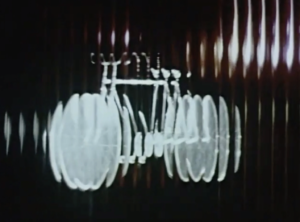
In their public appearance at the Armory in December 2022, Vujanović and Cvejić emphasized the importance of exteriorizing and sharing experience and memory with other people. Similarly, Jikken Kōbō shared experience that was based in experimentation and inquisitory optimism. In so far as their practice did not receive the documentation, or in some cases archiving, adequate to the level of work being created, there continues to exist a dilemma.
In 1955, Yamaguchi Katsuhiro and Takemitsu Tôru of Jikken Kōbō collaborated with filmmaker Matsumoto Toshio on the film Ginu’yû (The Silver Bike). The film is about a young girl named Alice who “longs for a bicycle and depicts a dream of the wind” [29]. The film according to director Matsumoto was a mixture of Matsumoto’s “preference for hyperrealism and Yamaguchi’s predilection for constructivism. The result was a work in which the classical opposition of illusion and abstraction was bridged”[30]. One of the first examples of experimental film in Japan, the original version was thought to be lost for many years. What was left were traces of the concept, stories of the collaboration, and the ways in which this project’s influence lived on. While it was found, it’s wavering permanence raises important questions. In thinking about how we handle documentation of transindividual formations today, perhaps our methods of documenting and retelling need to be expanded as we think of sharing our present in the future. Technologies change, as will the necessity to question our social relations and expand our social imaginations. Ultimately, the continued scholarship on the group illustrates the ability for such collective formations aligned with the transindividual to have a future that organically continues, it is just a matter of how we can help.
Members of Jikken Kōbō:
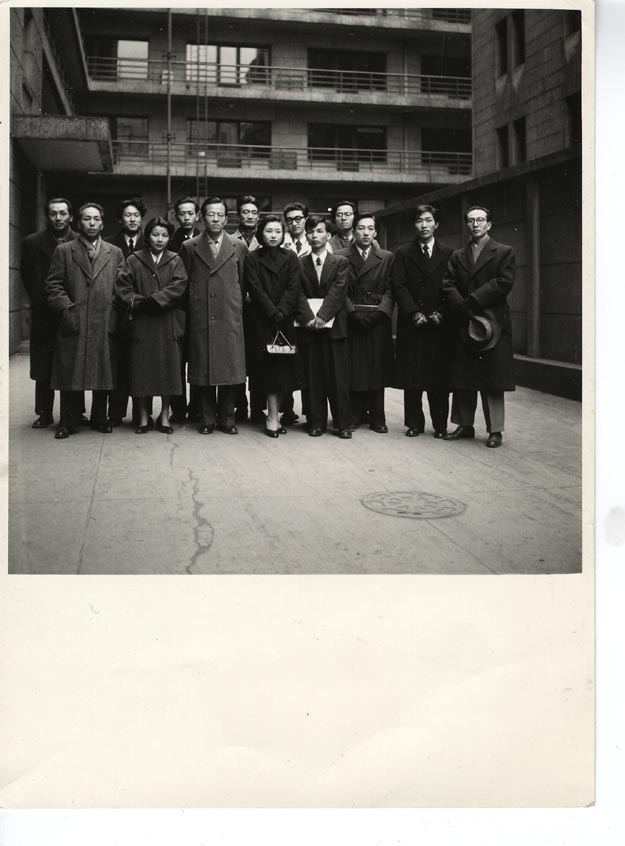
Kitadai Shōzō, Fukushima Hideko, Yamaguchi Katsuhiro, Komai Tetsurō, Fukushima Kazuo, Satō Keijirō, Suzuki Hiroyoshi , Takemitsu Tōru, Yuaso Jōji, Akiyama Kuniharu, Ōtsuji kiyoji, Imai Naoji, Sonoda Takahiro, Yamazaki Hideo, Takiguchi Shūzō (not in order shown)
——————–
WORKS CITED
[1] Odate, Andrew Maerkle and Natsuko. “Every Future Leads To Its Own Past.” 12 August 2010. https://www.art-it.asia/en/u/admin_ed_feature_e/K0pPOmUHXDBjlvgkJT76/?lang=en. 14 December 2022.
[2] Ibid.
[3] Ibid.
[4] Vujanović , Ana and Bojana Cvejić. Toward a Transindividual Self. Oslo – Brussel – Zagreb: Oslo National Academy of the Arts – SARMA – Multimedijalni Institut, 2022.
[5] Ibid, 9.
[6] Ibid, 12.
[7] Ibid, 15.
[8] Ibid, 26.
[9] Ibid, 19.
[10] Ibid, 24.
[11] Ibid, 26.
[12] Yamaguchi, Katsuhiro. Ikite Iru zen’ei: Yamaguchi Katsuhiro hyōronshū (Living avant-garde: A collection of criticisms by Yamaguchi Katsuhiro). Tokyo: Suiseisha, translated by Taro Nettleton, 2017, 2.
[13] Ibid, 3.
[14] Suzuki, Katsuo. “The Dream of the Collective: The Historical Pathos Running through the 1950s.” Bunka-Cho Art Platform Japan Translation Series (1996): 2.
[15] Ibid, 2.
[16] American Fluxus artist Dick Higgins (1938-1998) is credited with having first used the world “intermedia” in a text he wrote in 1966. (https://hyperallergic.com/595126/japanese-expanded-cinema-and-intermedia/)
[17] Tezuka, Miwako. “Jikken Kōbō and Takiguchi Shūzō: The New Deal Collectivism of 1950s Japan.” Positions 21:2 (2013): 352.
[18] Ibid, 372.
[19] Ibid, 372.
[20] Yamaguchi, Katsuhiro. Ikite Iru zen’ei: Yamaguchi Katsuhiro hyōronshū (Living avant-garde: A collection of criticisms by Yamaguchi Katsuhiro). Tokyo: Suiseisha, translated by Taro Nettleton, 2017, 15.
[21] Ibid, 16
[22] Ibid, 16
[23] Tezuka, Miwako. “Jikken Kōbō and Takiguchi Shūzō: The New Deal Collectivism of 1950s Japan.” Positions 21:2 (2013): 367.
[25] Ibid, 356.
[26] Ibid, 357.
[27] Ibid, 358.
[29] Matsumoto, Toshio. “The Dawn of the Japanese Experimental Film.” (1994): 18.
[30] Ibid, 18.
REFERENCES
Odate, Andrew Maerkle and Natsuko. “Every Future Leads To Its Own Past.” 12 August 2010. https://www.art-it.asia/en/u/admin_ed_feature_e/K0pPOmUHXDBjlvgkJT76/?lang=en. 14 December 2022.
Suzuki, Katsuo. “The Dream of the Collective: The Historical Pathos Running through the 1950’s.” Bunka-Cho Art Platform Japan Translation Series (1996): 1-46.
Tezuka, Miwako. “Jikken Kōbō and Takiguchi Shūzō: The New Deal Collectivism of 1950s Japan.” Positions 21:2 (2013): 351-381.
Vujanović , Ana and Bojana Cvejić. Toward a Transindividual Self. Oslo – Brussel – Zagreb: Oslo National Academy of the Arts – SARMA – Multimedijalni Institut, 2022.
Yamaguchi, Katsuhiro. Ikite Iru zen’ei: Yamaguchi Katsuhiro hyōronshū (Living avant-garde: A collection of criticisms by Yamaguchi Katsuhiro). Tokyo: Suiseisha, translated by Taro Nettleton, 2017.

